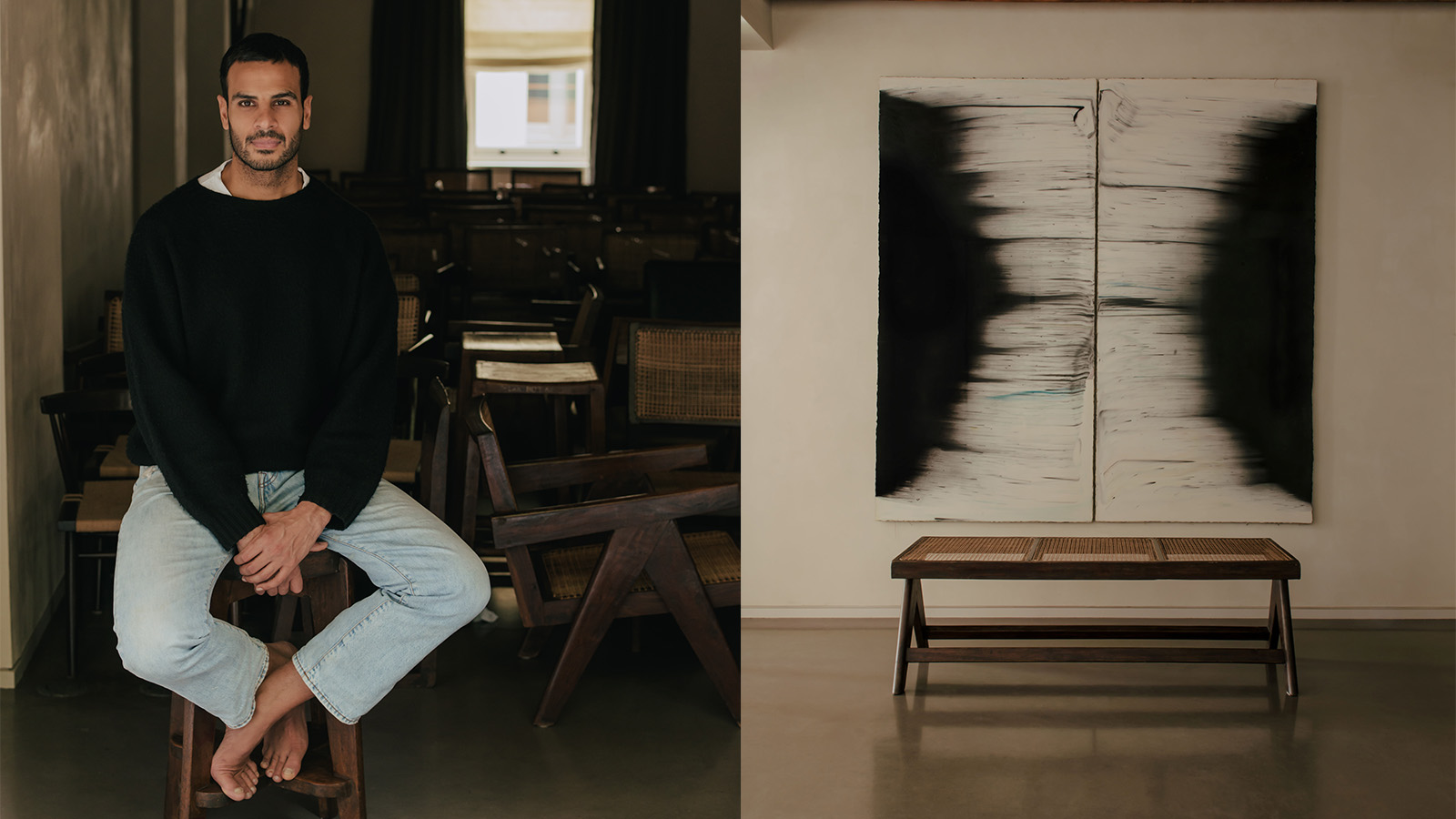
Just a ten-minute amble from the utilitarian whirligig of the recent Frieze London 2024, we discovered an altogether more cordial art happening. Rajan Bijlani – who for the last two decades has amassed a collection of some 500 pieces of Pierre Jeanneret furniture from Chandigarh, the city formed in 1947 by India’s first prime minister Jawaharlal Nehru and masterminded by Le Corbusier – has opened a show, working with co-curators Truls Blaasmo and Michael Jefferson, which unites six artists of South Asian origin at his home, the historic London townhouse of Fonthill Pottery.
‘Syncretic Voices: Art & Design in the South Asian Diaspora’ in London

Working with Michael Jefferson, a former senior specialist in 20th-century design at Christie's, and independent curator Truls Blaasmo, Bijlani exhibits painting and sculpture for sale in a changing, lively, domestic space.
Ceramic artist Lubna Chowdhary’s emerald-green hand-glazed ceramic tile Marker 70 handsomely sits on the wall of the ground floor kitchen, framed upon first view by a curtain of pots and pans dangling from the ceiling. Rana Begum’s extra-terrestrial totem pole No. 1261 T Reflector in fluoro orange and red plastic is placed outside on a lower ground floor terrace lined by living walls.
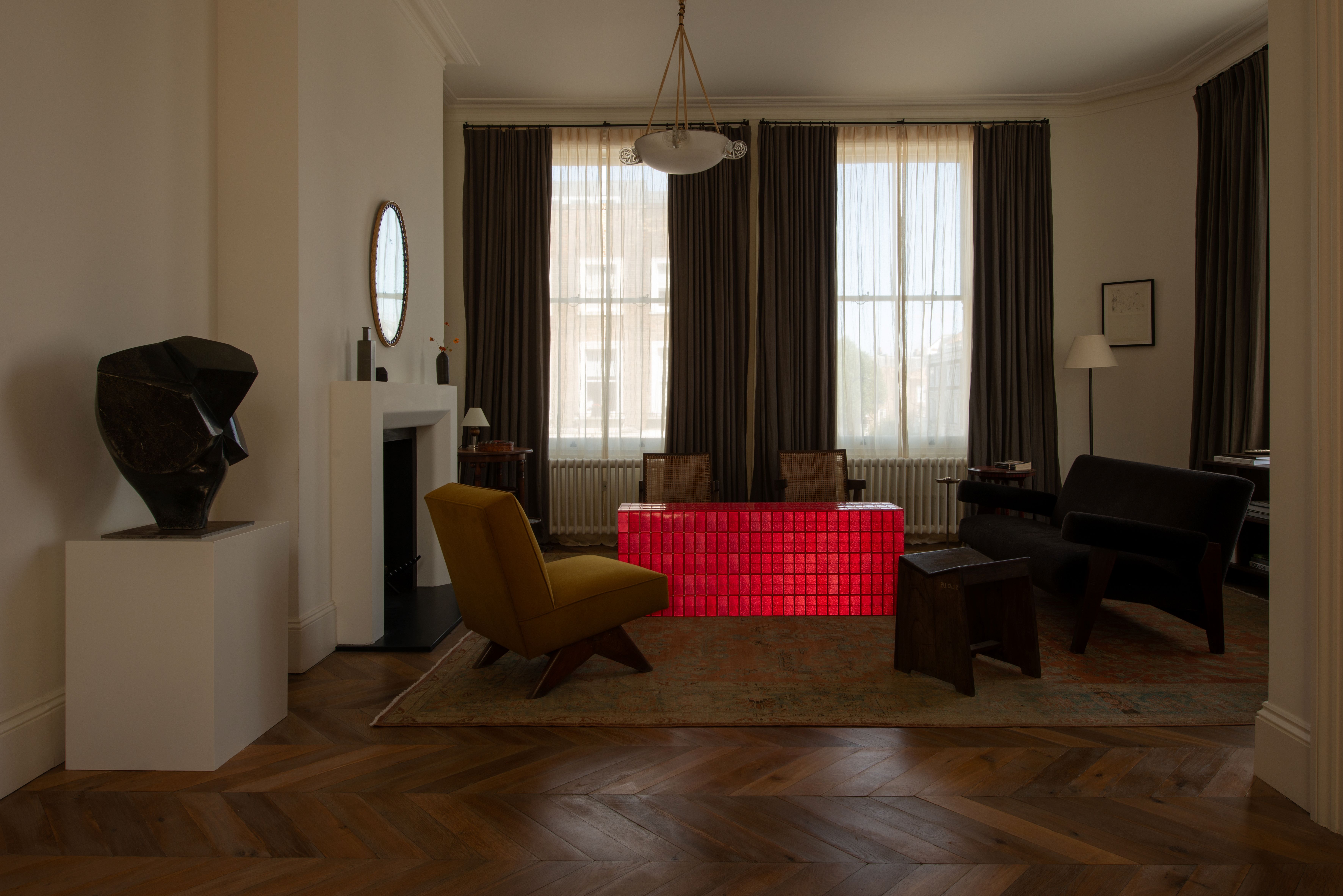
Here, things are layered with design. The patina of wear on top of Jeanneret’s teak dining table from 1960 is mirrored in the abstract forms found in nearby paintings by Tanya Ling and Soumya Netrabile. A crease down the middle of a butterfly stool appears in Vipeksha Gupta’s Untitled IV as a charcoal line slicing through pigment. Jefferson says: ‘When people live with their art, it’s totally different to how it is experienced within a white box or barren gallery. People come through and they linger. Sometimes you have to take a minute to interpret the art, but it feels settled. It allows you to consider it.’
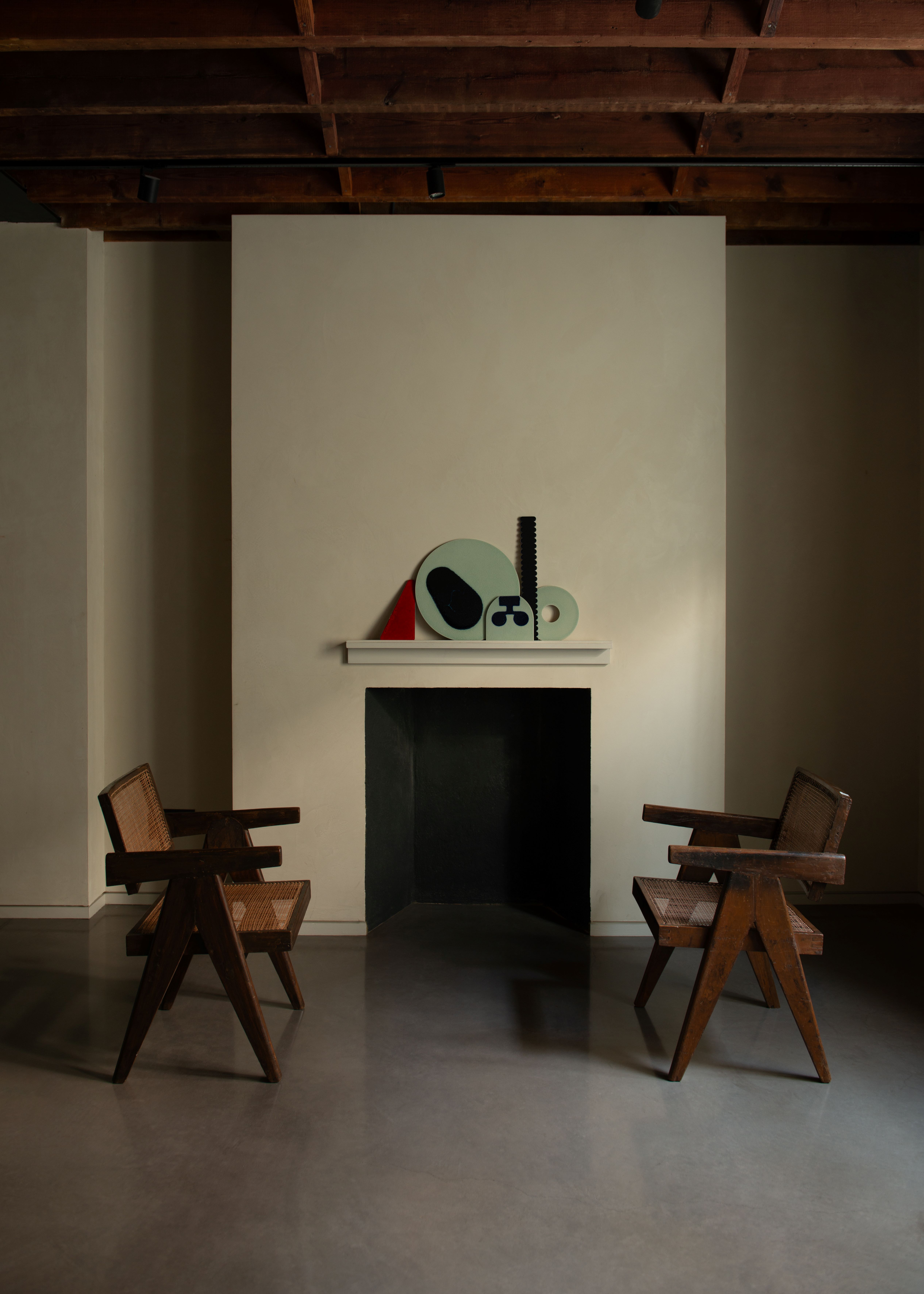
There is a risk that artworks outside of the protection of a white cube can too easily become reduced to objects of interior design. Props assessed only by their colour, shape and size. ‘I’ve noticed more and more that interior designers have a lot of power in deciding what art goes into a home,’ Bijlani says. ‘Yet while some art might work aesthetically, you might not want to live with it. There is a tension… should art be shown surrounded by blank space so you can really focus on it? Personally, I love the conversation that begins when everything gets together into one big thing.’
All of the pieces in Bijani’s furniture collection are embroidered with evidence of improvisational repair work, extra nails and hammered-in metal brackets.
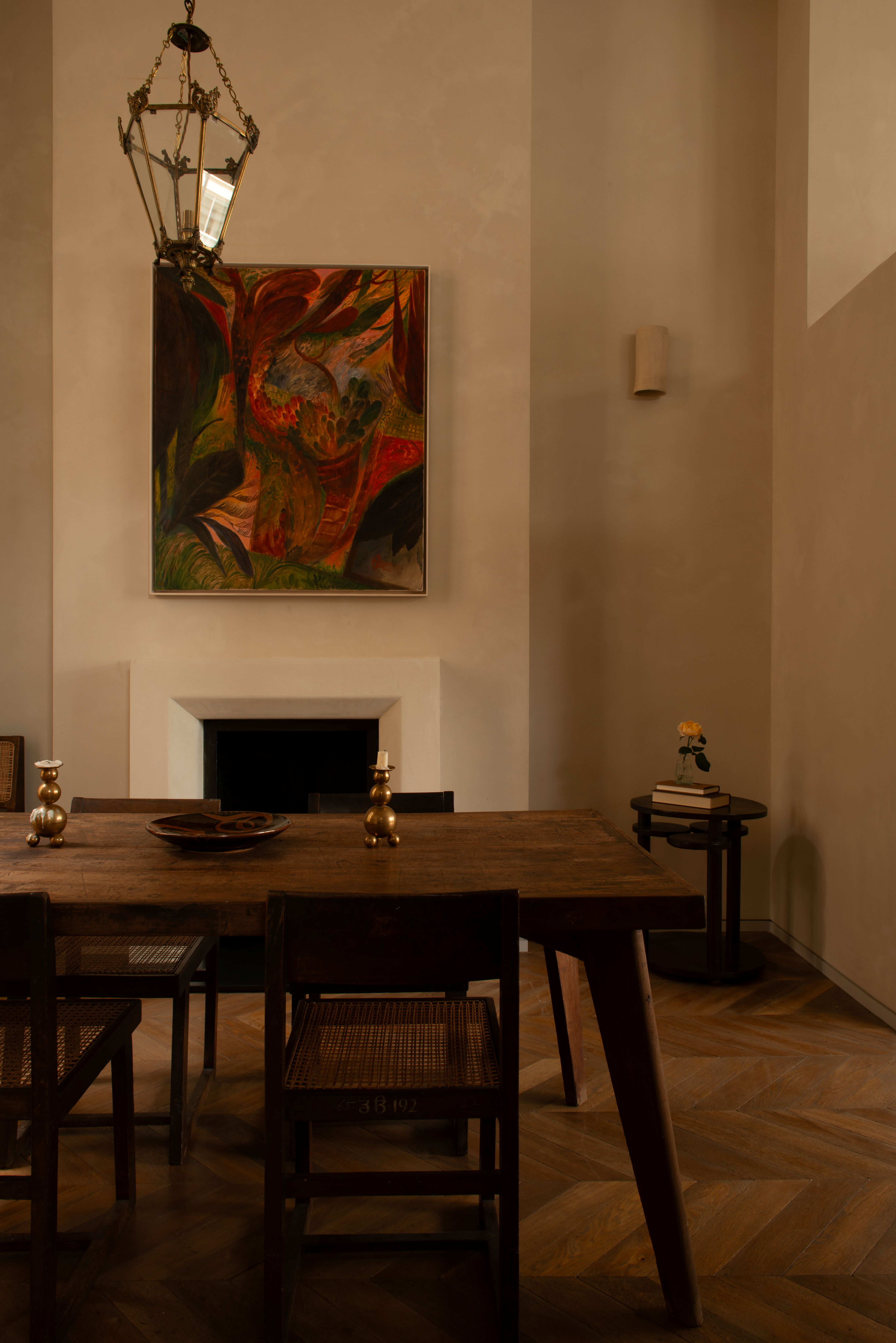
On the lower ground floor a unique square table from the Punjab University Cafeteria in Chandigarh c.1961 bears a proud diamond-shaped patch of aluminium. Its scratched surface thrums with the same lustre of polymer and pigment in Harminder Judge’s nearby painting, A ghost dance (a composition 2). ‘This is the great thing about furniture, it absorbs the life force that it’s had,’ Jefferson says. ‘There are a lot of people that haven't been inspired by that and say, “Clean this up. Let's sand it down!” and that is a mistake. You can't get this back; you’ll erase its story. It may not suit your taste, but Rajan is focused on early production with this rigorous line and robust patina because it's appealing. It’s about humanity. It’s a different way of looking at this stuff.’

All of the works in ‘Syncretic Voices’ were installed one month before the show opened to the public, last week (9 October 2024). In that time, Bijlani has noticed how they each change according to the time of day. Begums’s No. 1260 B Reflector is placed on the first floor in direct view of Bijlani’s desk: ‘Depending on the light it can sometimes feel like a UFO has dropped into my living room,’ he says.
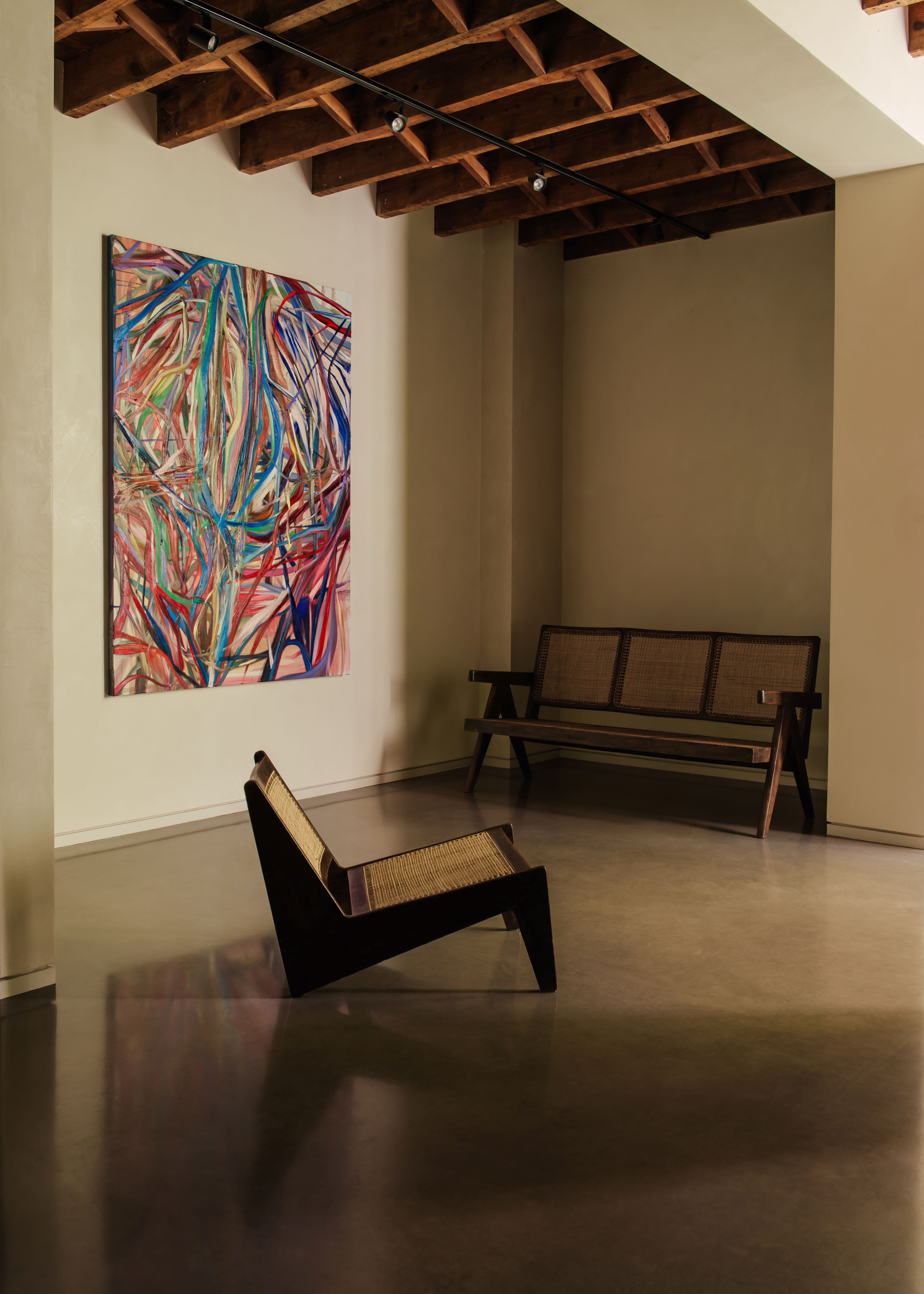
As a cohort, the artists share a focus on a meditative approach to making, yet their individual aims are broad. ‘I don't know if there is this universal theme of the works from a cultural point of view,’ Bijlani says. His own family had to leave Larkana (present-day Sindh in Pakistan) in 1947 to migrate to a newly formed India. He grew up in London. ‘Chandigarh was born because of partition. Nehru's principles and idea of this passing down of knowledge from Western architects to younger Indian architects like Charles Correa, Urmila Eulie Chowdhury, BV Doshi, etc, is why I wanted to show works made by artists from the South Asian diaspora. Through settling in places like the UK or the USA, their oeuvre adds to this conversation about movement, migration, attitude. We're all connected, regardless of where we're from.’
‘Syncretic Voices: Art & Design in the South Asian Diaspora’ runs until 1 November 2024, by appointment only, rajanbijlani.com







